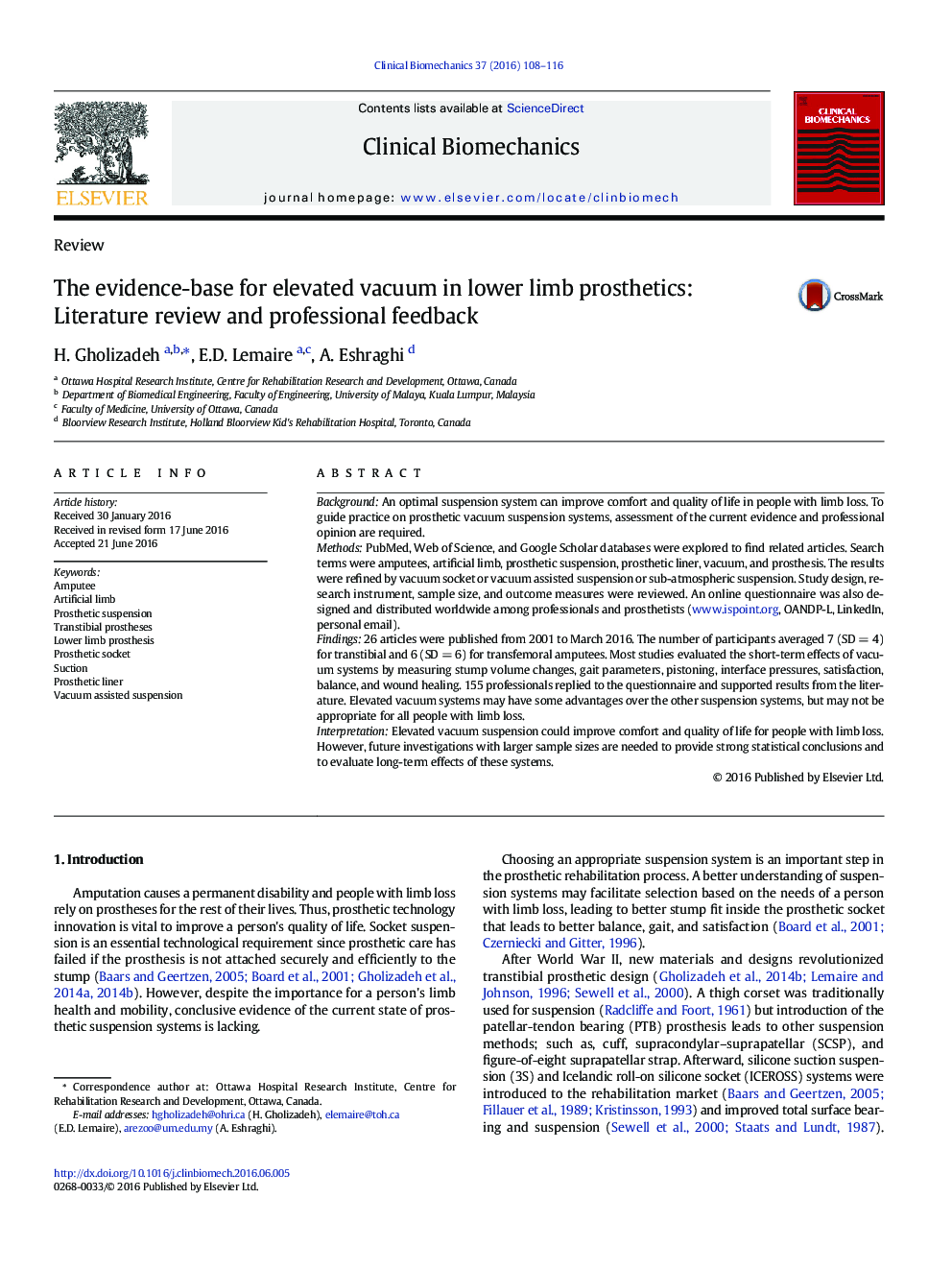| Article ID | Journal | Published Year | Pages | File Type |
|---|---|---|---|---|
| 4050009 | Clinical Biomechanics | 2016 | 9 Pages |
•Elevated vacuum system could decrease limb volume changes during the day and improve prosthesis control.•Elevated vacuum can improve proprioception, comfort, gait symmetry, circulation, prosthetic use, and amputee quality of life.•Elevated vacuum may have some advantages over the other suspension systems, but may not be appropriate for all amputees.
BackgroundAn optimal suspension system can improve comfort and quality of life in people with limb loss. To guide practice on prosthetic vacuum suspension systems, assessment of the current evidence and professional opinion are required.MethodsPubMed, Web of Science, and Google Scholar databases were explored to find related articles. Search terms were amputees, artificial limb, prosthetic suspension, prosthetic liner, vacuum, and prosthesis. The results were refined by vacuum socket or vacuum assisted suspension or sub-atmospheric suspension. Study design, research instrument, sample size, and outcome measures were reviewed. An online questionnaire was also designed and distributed worldwide among professionals and prosthetists (www.ispoint.org, OANDP-L, LinkedIn, personal email).Findings26 articles were published from 2001 to March 2016. The number of participants averaged 7 (SD = 4) for transtibial and 6 (SD = 6) for transfemoral amputees. Most studies evaluated the short-term effects of vacuum systems by measuring stump volume changes, gait parameters, pistoning, interface pressures, satisfaction, balance, and wound healing. 155 professionals replied to the questionnaire and supported results from the literature. Elevated vacuum systems may have some advantages over the other suspension systems, but may not be appropriate for all people with limb loss.InterpretationElevated vacuum suspension could improve comfort and quality of life for people with limb loss. However, future investigations with larger sample sizes are needed to provide strong statistical conclusions and to evaluate long-term effects of these systems.
